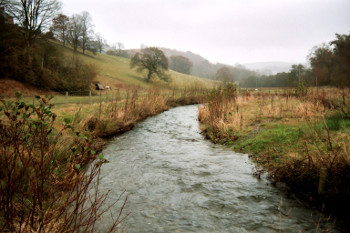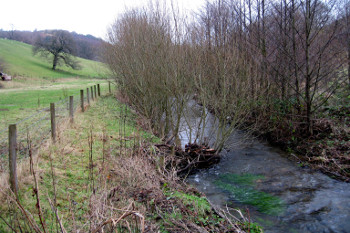Habitat Degradation
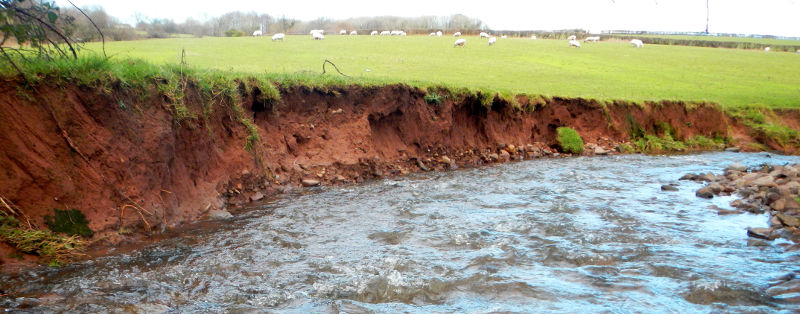
During our surveys of the upper Wye in 1995/6 we found that the tributaries were no longer in a sufficiently good state to produce the densities of juvenile salmonids of former years. A huge increase in stocking densities had occurred since the early 1980s and the historic practice of coppicing had ceased decades earlier. Habitat degradation, caused by overgrazing and poaching by sheep and cattle, results in the destabilisation of the riverbanks and denuding of riparian vegetation, causing streams to become wider and shallower. When combined with heavy shading as a result of overgrown, multi-stem alders, fish densities in the majority of tributaries streams were only 20% of their potential and Ranunculus weed had disappeared completely from sites where it had once been abundant.
We were not surprised to find large parts of the Usk in a similar condition when we surveyed the catchment in 2004 and again in the Lugg and Arrow in 2006. For further details of this work please see the sections on UP!, Phish and WHIP and Lugg and Arrow projects.
The remedy is to fence out stock, coppice over-shaded sections and repair accelerated erosion. With over 1,000km in the catchments, our resources need very careful targeting. Research by O' Grady and others suggest that fully restored habitats can very significantly increase survival rates of salmon and trout.
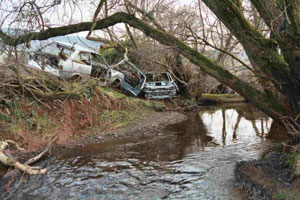
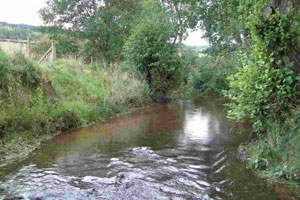
Severe habitat degradation and over shading, along with pollution from abandoned cars had led to the Llynfi Dulas, an upper Wye tributary, becoming almost uninhabitable for juvenile salmonids. Just one year after the completion of restoration work in 2003, the stream started to revert back to its natural state (above right) and is now one of the more productive in the Wye system.
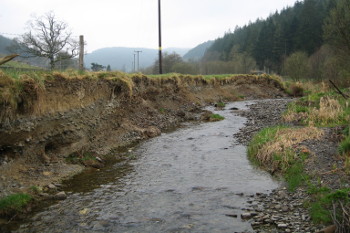
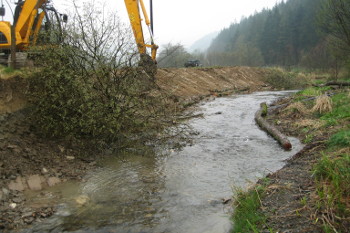
Above left: the Clywedog, a tributary of the river Ithon, was a wide, shallow stream prone to bank erosion. Above right: a WUF team installing a soft revetment into the bank which was then followed by a fence to prevent stock access. Below left shows the stream one year later, while below right shows it after three years. Note the narrower, deeper channel with plenty of bankside cover, stabilised banks and the clean gravel bottom.
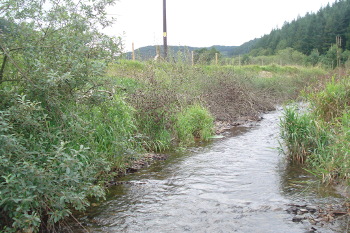
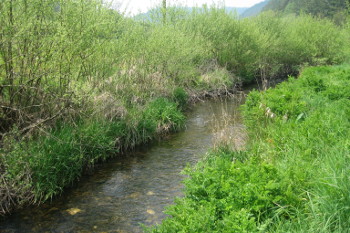
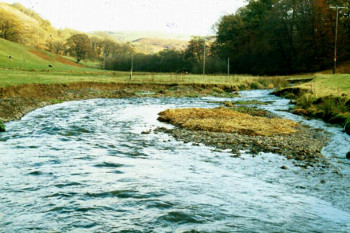
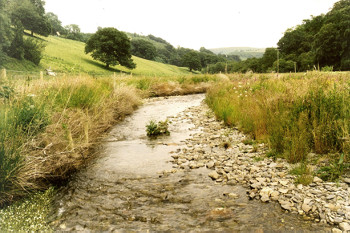
We found much of the Clywedog (and other upper Wye tributaries) to be in the same depressing state. Above left is another section where the banks had been straightened and over-grazed. With no trees or other bankside vegetation it was vulnerable to erosion and had a wide, shallow channel with significantly reduced fish densities. Above right shows the stream one year after WUF fencing, along with soft revetments installed and below left the same section seven years after restoration work (note the natural regeneration of alder). The final photo, taken six years later, shows again a narrow, deep channel with alder protecting the banks and the thriving ranunculus. There are more juvenile fish here now.
